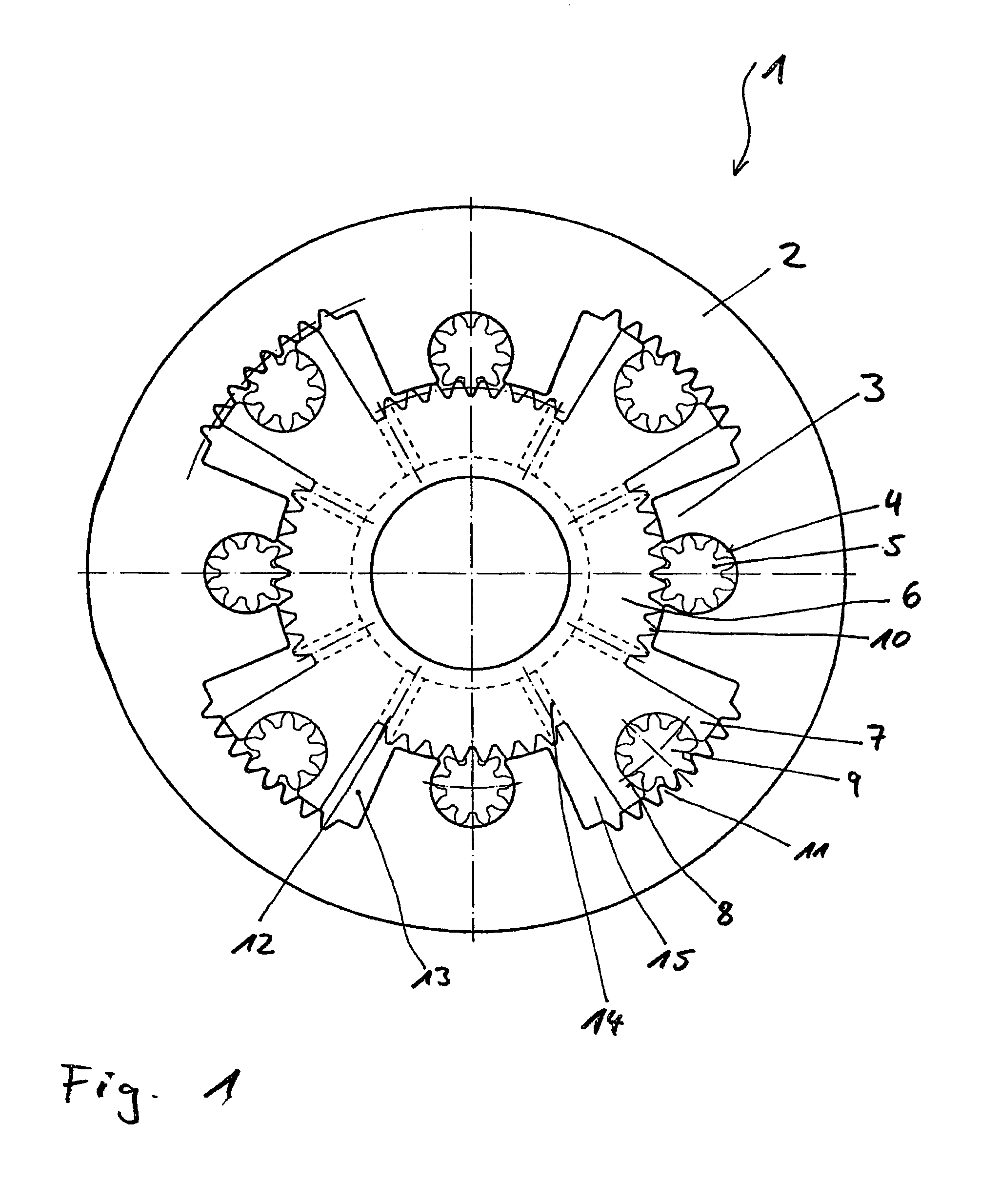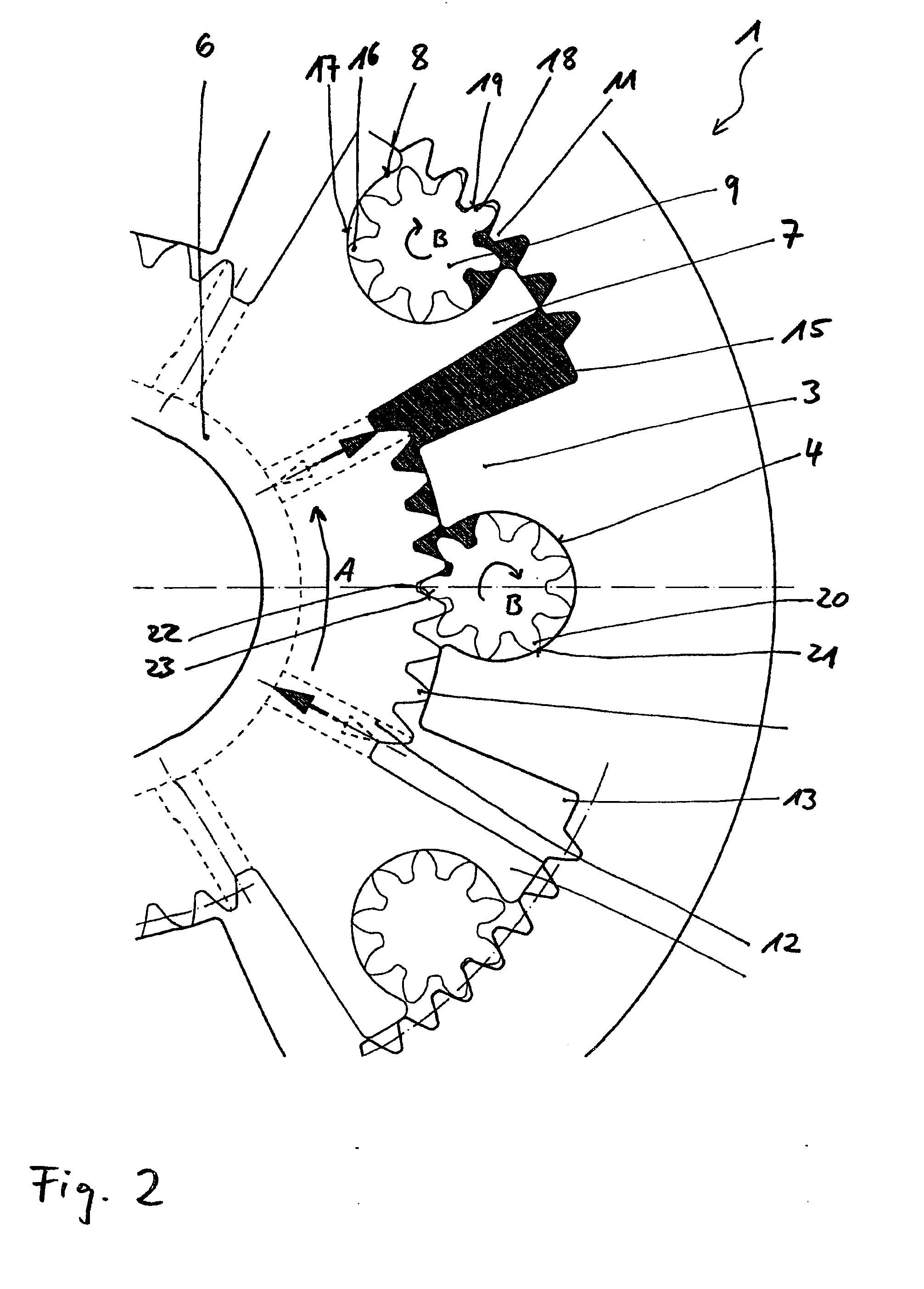Camshaft Adjuster for an Internal Combustion Engine
a technology for internal combustion engines and camshafts, which is applied in the direction of yielding couplings, valve arrangements, couplings, etc., can solve the problems of only being able to achieve tolerances and still not in the desired position of camshafts relative to crankshafts, so as to achieve greater tolerances, reduce the mass of moving parts, and increase the turning angle
- Summary
- Abstract
- Description
- Claims
- Application Information
AI Technical Summary
Benefits of technology
Problems solved by technology
Method used
Image
Examples
Embodiment Construction
[0027]FIG. 1 shows a camshaft adjuster 1 for an unrepresented internal combustion engine with a stator 2 which comprises, distributed over its periphery, stator vanes 3 projecting inwards in the radial direction. Each of the stator vanes 3 comprises a mounting pocket 4 which is open in the inward direction and in which a stator vane planet gear 5 is mounted. Mounted in the stator 2 is a rotor 6 which comprises rotor vanes 7. Each rotor vane 7 comprises a mounting pocket 8 which is open in the outwards direction and in which a rotor vane planet gear 9 is mounted.
[0028] Each of the stator vanes 3 projects inwards in the radial direction into the spaces between the two rotor vanes 7. The same holds for the rotor vanes 7, each of which projects cleanly into the intervening space. Thus it follows that the rotor 6 is formed to have approximately the form of a star.
[0029] The stator vane planet gear 5 disposed in the stator vane 3 meshes with a denticulated segment 10 disposed on the out...
PUM
 Login to View More
Login to View More Abstract
Description
Claims
Application Information
 Login to View More
Login to View More - R&D
- Intellectual Property
- Life Sciences
- Materials
- Tech Scout
- Unparalleled Data Quality
- Higher Quality Content
- 60% Fewer Hallucinations
Browse by: Latest US Patents, China's latest patents, Technical Efficacy Thesaurus, Application Domain, Technology Topic, Popular Technical Reports.
© 2025 PatSnap. All rights reserved.Legal|Privacy policy|Modern Slavery Act Transparency Statement|Sitemap|About US| Contact US: help@patsnap.com



